Heathcote Historic Town Walk

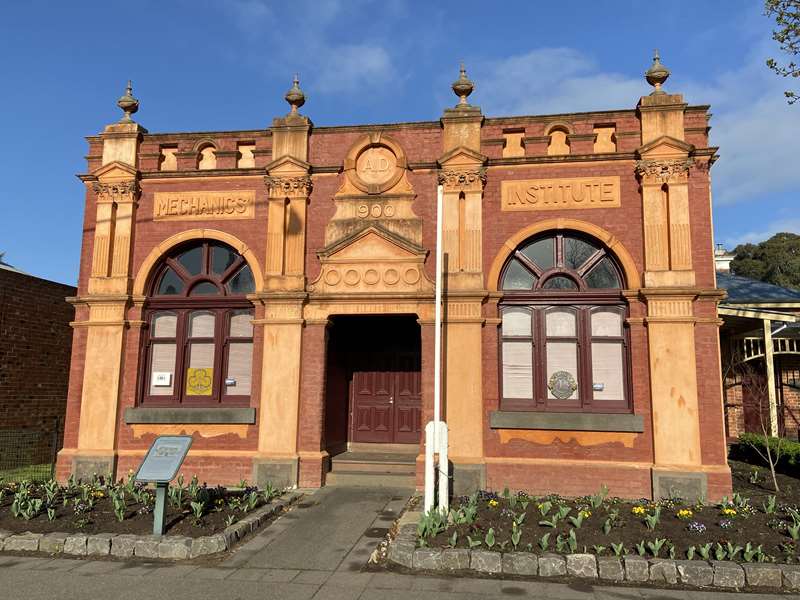
At the foot of Mt Ida, Heathcote is situated amidst a National Park and State Forests beside McIvor Creek.
Heathcote is clustered around High Street which presents an interesting and diverse streetscape of old shopfronts, hotels, churches, some distinguished homes and the post office. The trees that line the main street and the plantation at Queen Meadow were planted in the 19th century on the advice of Baron Von Mueller who made a significant contribution to Melbourne's Royal Botanic Gardens.
A number of prehistoric quarry sites have been found at Mt Camel Range, north of Heathcote, providing evidence of ancient Aboriginal associations with the land. It is clearly evident that the Wuywurrung People inhabited the district well before European settlement.
The first Europeans in the area was the exploration party of Major Thomas Mitchell in 1836. Mitchell named the McIvor creek after a member of his party and this title was later applied to the Shire.
Pastoralists soon moved into the area and a track with a couple of roadside inns, developed through what would later become the townsite. Produce was carted along this route to and from the northern sheep stations.
However, the town itself developed on the back of a series of gold rushes along McIvor Creek commencing in 1851. One of the major strikes (1852) was a Golden Gully, behind the old courthouse. By 1855, the alluvial gold was running out and reef mining commenced. Consequently, the population dropped to about 6,000 by 1860 as ex-miners took up land or began timber cutting in the forests - an industry much aided by the arrival of the railway around 1890.
At the peak of the gold rushes there were up to 35,000 people, largely housed in tents and shanties on the fields. 3,000 Chinese walked to the digging from Robe in South Australia where they had disembarked to avoid paying a tax levied upon Chinese disembarking in Victoria. There were at least 3 breweries; 22 hotels; 2 flour mills, reflecting the emergence of wheat growing in the district; a bacon factory, hospital, banks and several wineries.
The town was apparently named by Lord Heathcote, not in honor of himself, but because of the quantities of heath growing in the district - if that is plausible.
Although the population remained steady until 1880's, it was down to 1,090 by 1891 as gold reserves dwindled. Other local mining communities were Balmoral (now known as Redcastle) which reputedly had 17,000 people but ceased to exist when mining ended around 1910. Costerfield once employed 700 men and closed in 1925 - it once produced 92% of the state's antimony. Graytown was reported to have had 30,000 on its fields, but that was short lived.
Heathcote Historic Town Walk Map
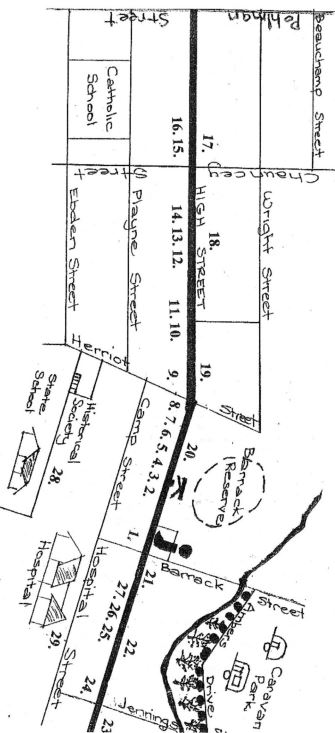
The Heathcote Historic Town Walk along High Street takes in 29 points of historic interest including:
1. Bakers Wood Oven
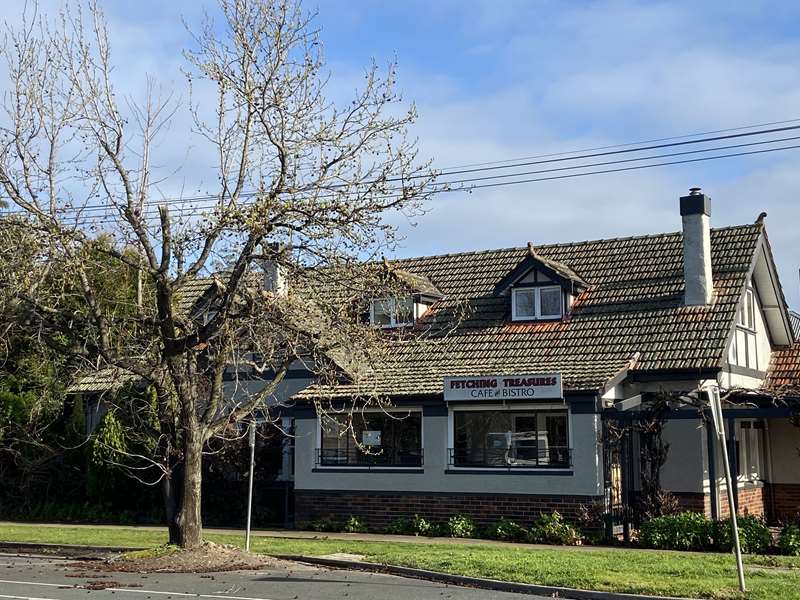
Built prior to 1870. John Paver Flowers, baker, was the original owner. Gerhard Jongebloed built the bakehouse and shop in 1933 - it is now the home of Fletching Treasures Antiques, Cafe and fine accommodation.
2. Mechanics Institute - 1900

From humble beginnings, the Institute offered reading rooms, books, newspapers and lending library as far back as 1860s. It now accommodates Senior Citizens, Girl Guides and Lions Club.
3. Courthouse Crafts
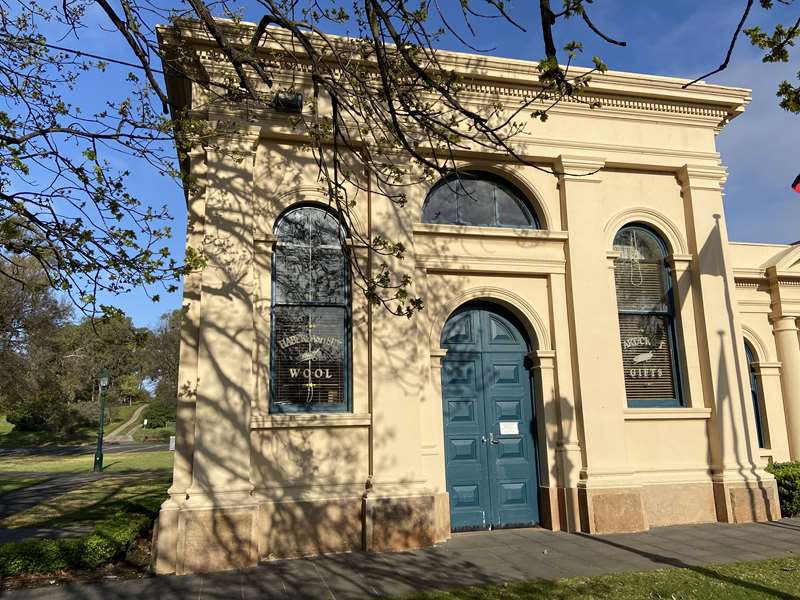
The Courthouse served the town from 1864 to 1989.
4. Town Hall and Shire Offices
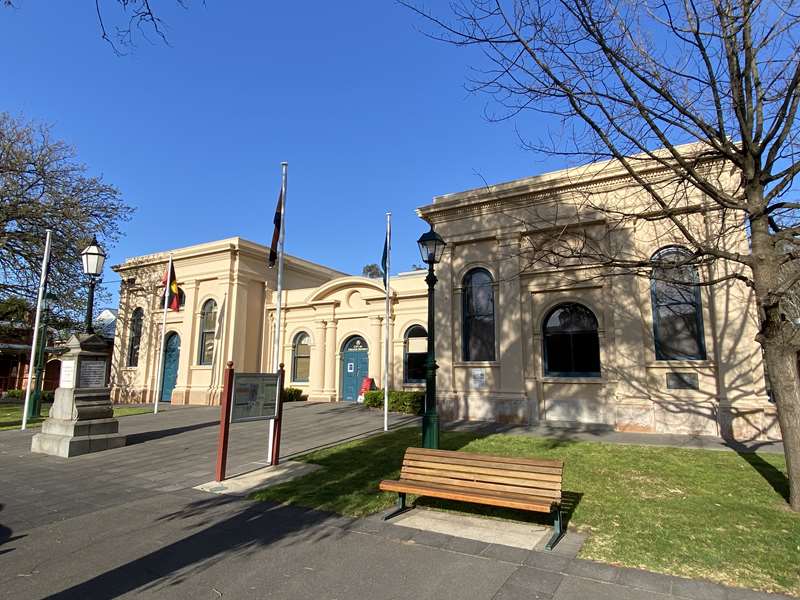
1864 to the present. Weekly dances and concerts were held in the Town Hall. Adjoining offices were shared with the Courthouse. A steel lockup behind the Courthouse accommodated those awaiting court appearances.
5. Returned Services League
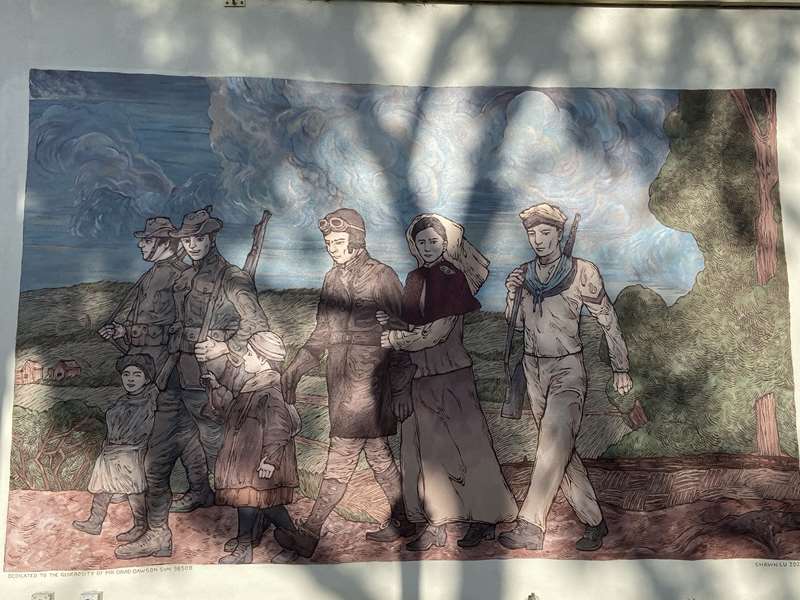
1955 to the present. It is used as a major function hall within the township.
6. The Commercial Bank - 1886
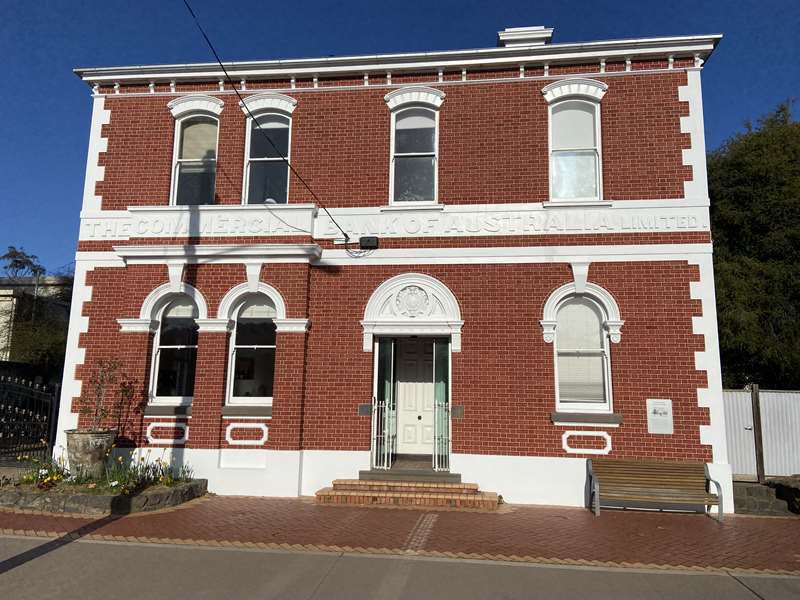
Opened in other premises in 1877 and closed as Westpac in 1995. Now operates as licensed restaurant, historic centre and museum under the title 'The Bank Heathcote'.
7. Uniting Church - 1886
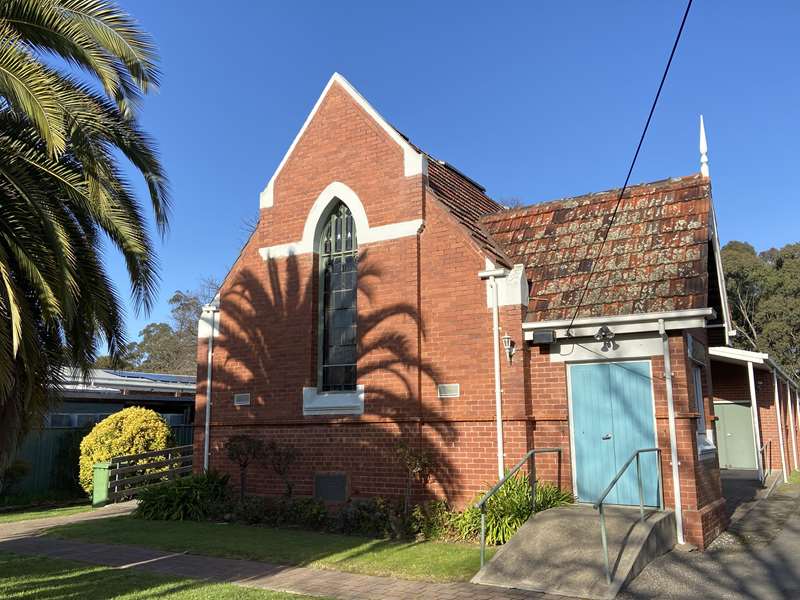
Previously Methodist Church until united with Presbyterian Church 1969.
8. Post Office and Residence - 1890
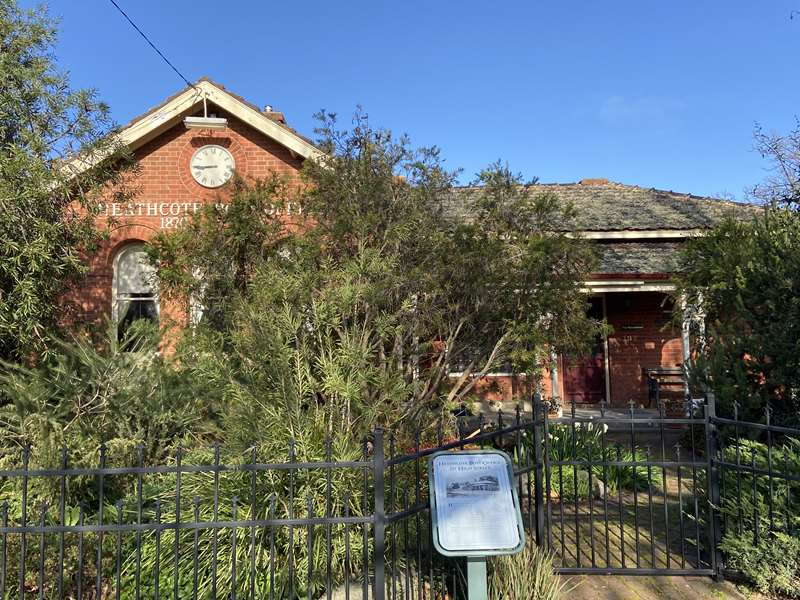
The first post office was a tent on Camp Hill. Then in 1860, the post office and telegraph office amalgamated in Victoria and were positioned opposite the Emeu Hotel. They moved to the present site into a small building, which has been extended into the current Post Office and Residence.
9. The Commercial Hotel
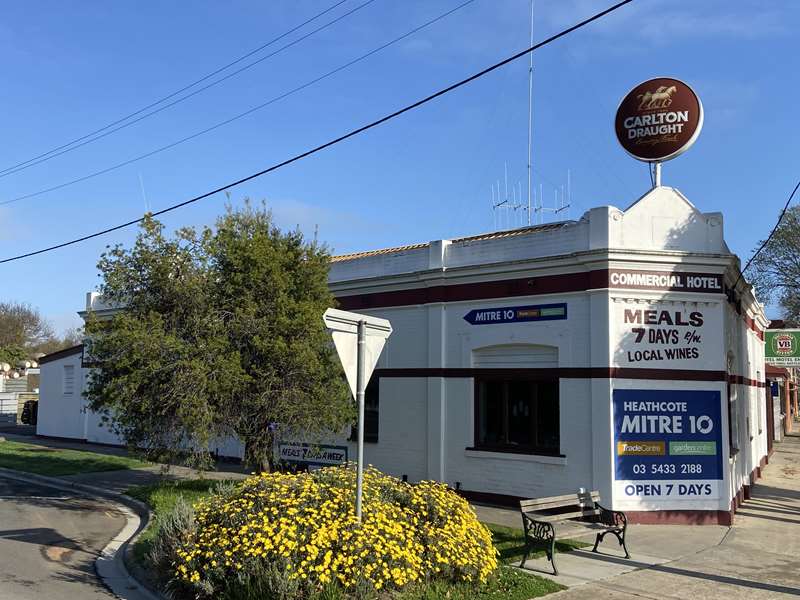
Site of Camp Hotel 1869-1904. Demolished 1904 and rebuilt as the Commercial Hotel. After a fire in 1978 was rebuilt again.
10. Flour Mill - 1869
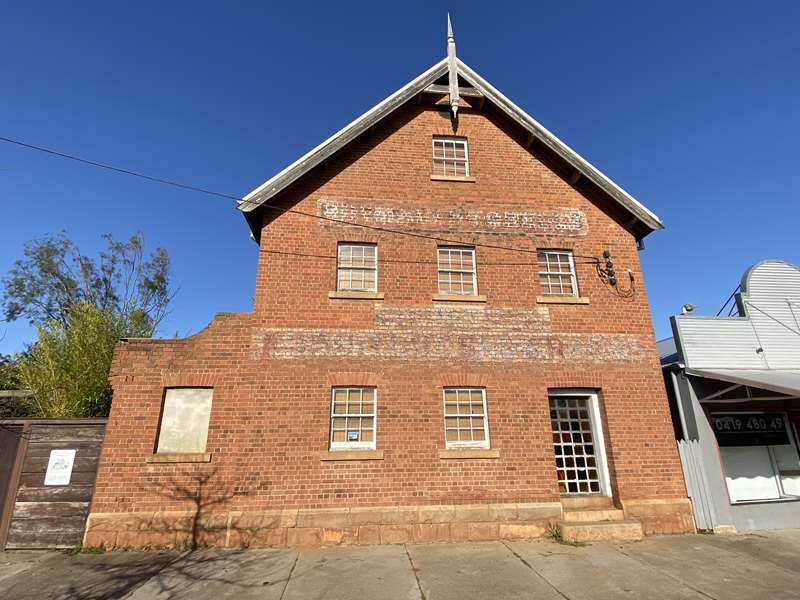
Moore Christie & Spinks (now a private residence). All of Heathcote's mills were of the stone grounding type, powered by steam. These could not compete with the steel roller mills, so were closed soon after opening. Christies mill is still standing, much as it was the day it opened - see the chimney.
11. State Savings Bank, 153 High Street - 1922
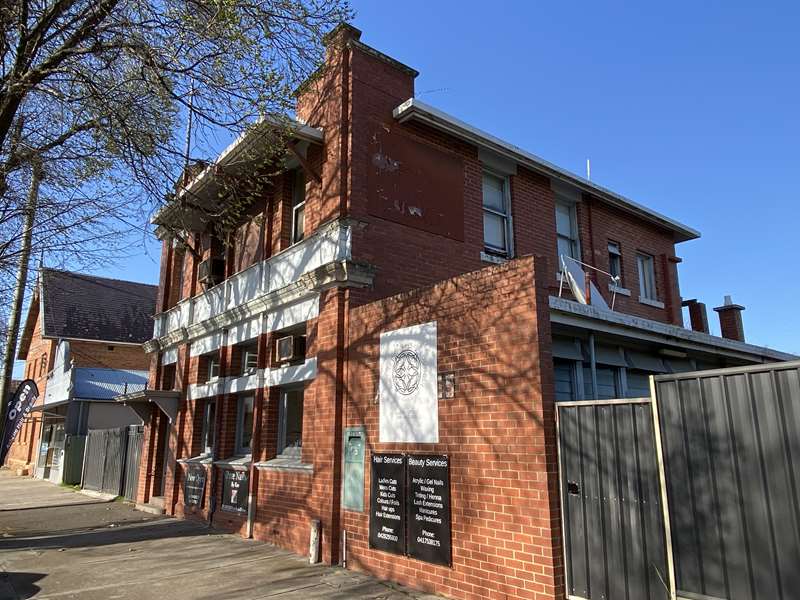
Originally built for the State Savings bank, this weatherboard building was later used by the Commonwealth Bank. Latterly the building was used by the 'McIvor Times' which was established in 1863 and has witnessed most of Heathcote's history.
12. St Johns Anglican Church - 1868
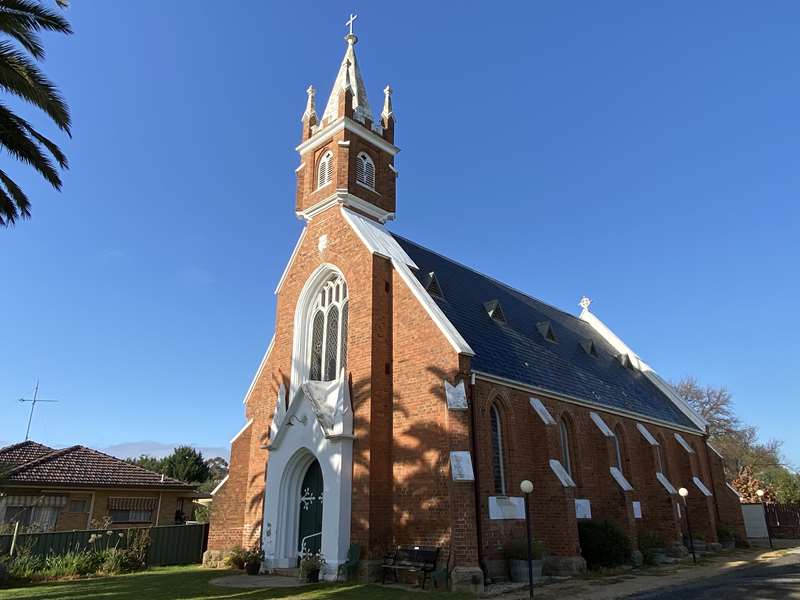
The only church to remain on its original site granted by the government in 1853.
13. Budd Hall - 1854
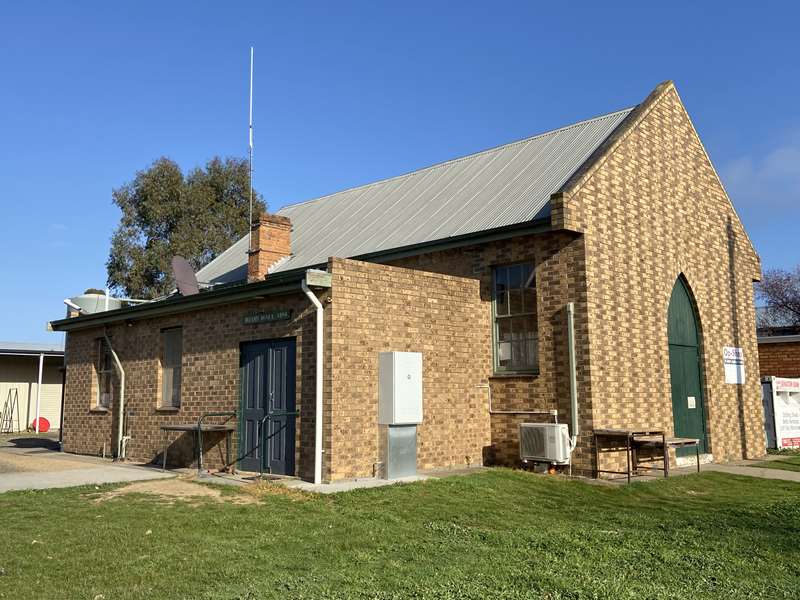
The first church to be built in Heathcote, it was then named Christ Church.
14. Union Hotel - 1856
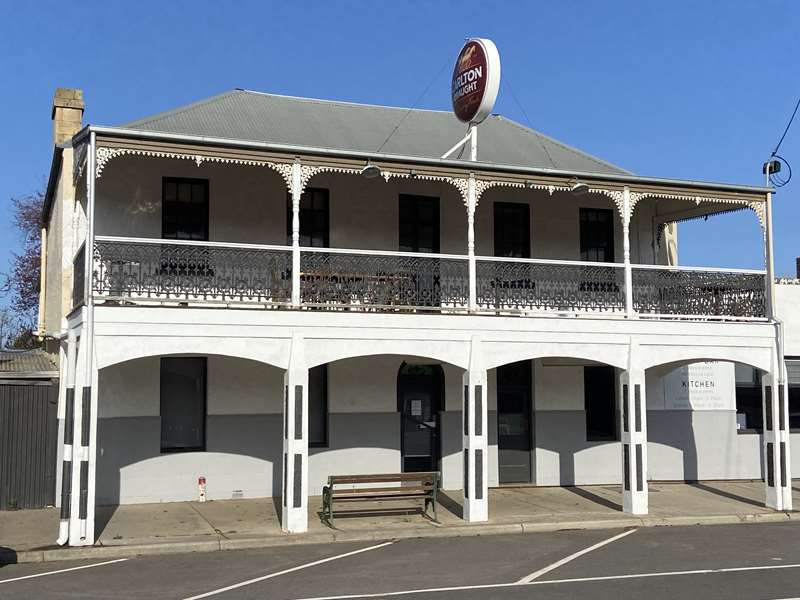
Heathcote's oldest existing hotel, was opened in 1856 and completed in 1871. It is still mostly in original condition.
15. Heathcote Winery - 1860
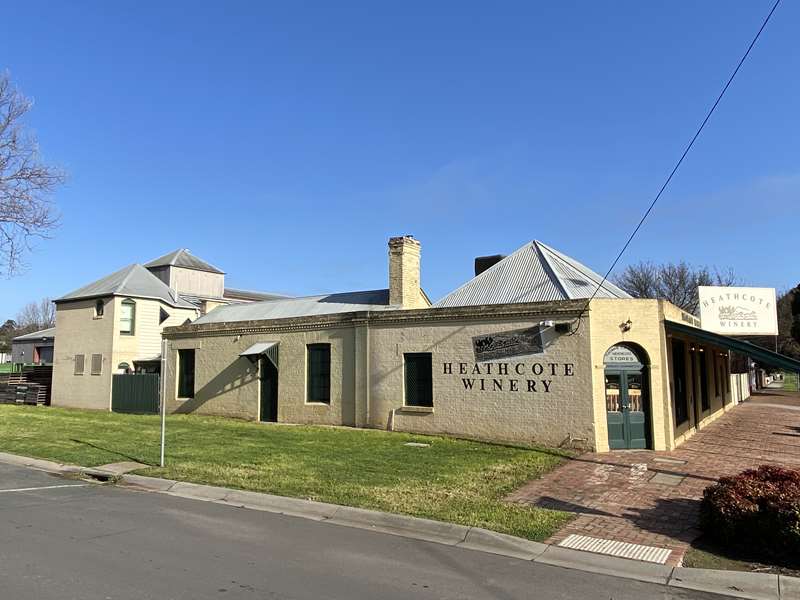
Originally Craven's General Store to 1941, which included a bakery and coach service.
16. The Emeu Hotel - 1858-1870
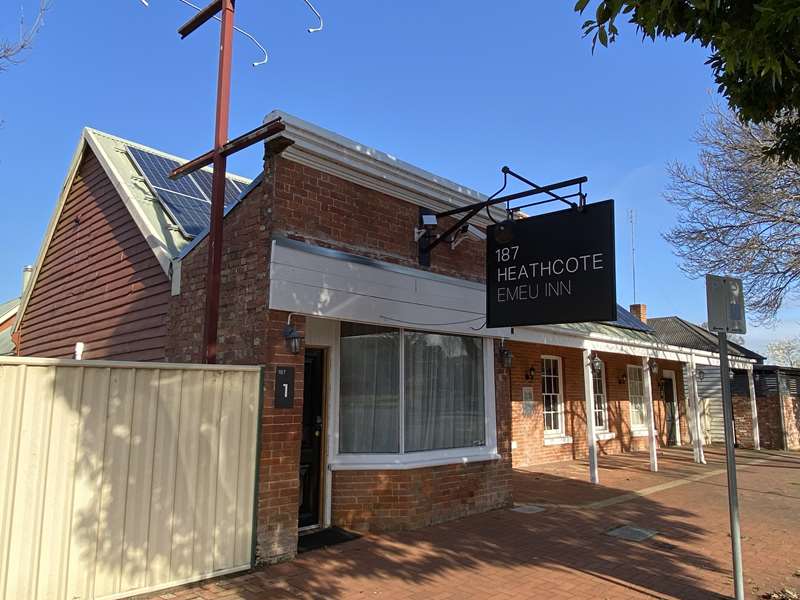
Now the Emeu Inn Restaurant, Bed & Breakfast and Wine Centre. The small shop at the side was Brady's Butcher Shop. This part of the building has now been refurbished to become the 'Brady Suite' named after the first owner of the Emeu Hotel. Wine Centre opened Feb 2001.
Cross the road now!
17. Survey Office - 1853
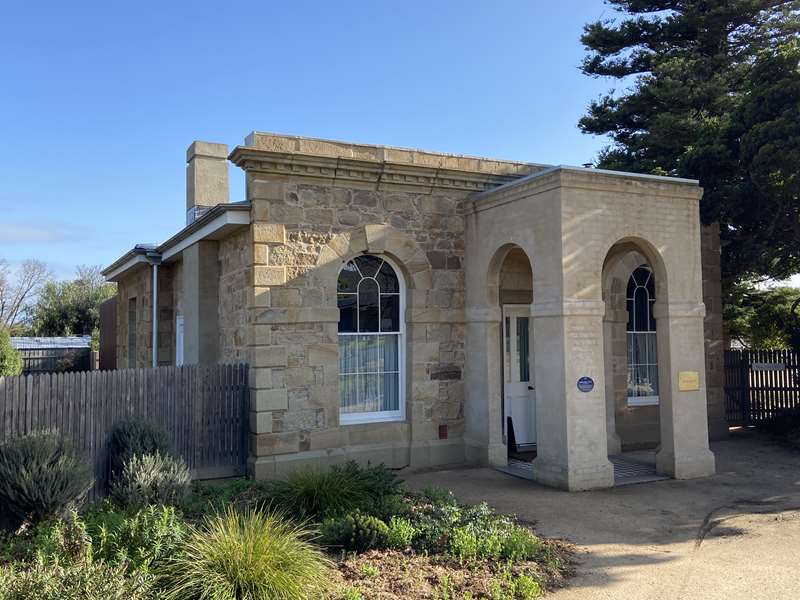
(Now a private residence) The district surveyor Phillip L.S. Chauncey, surveyed the township in 1853-54. The original building see stone section at rear, was extended in 1897 for private residence and doctors practice.
18. Site of First Council Meetings, 166 High Street - 1856
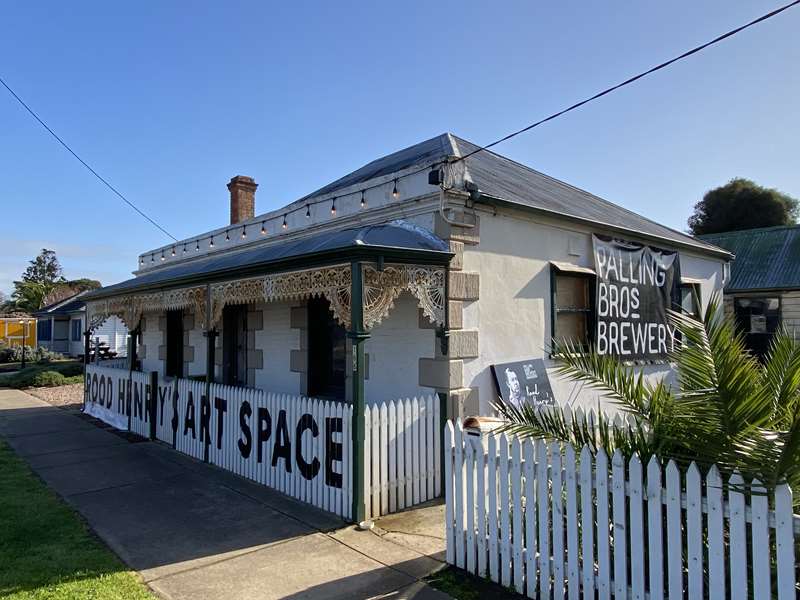
(Known locally as Winter Creek). This cottage was the site of the first council meeting in 1859, for which purpose a rent of 65 pounds per year was paid. Built by Mr James Kennedy who also held the licence to the Union Hotel in the latter part of 1863.
19. Mona Lisa Gallery, 146 High Street - 1850s
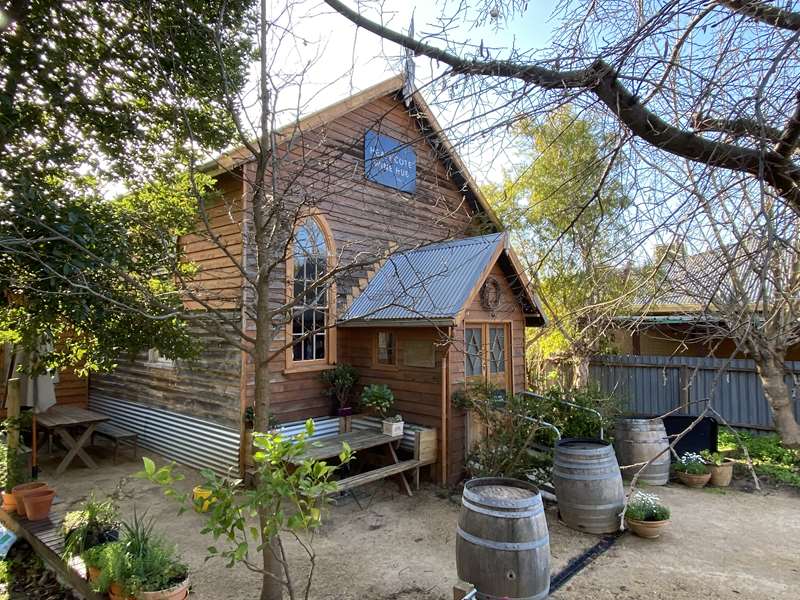
Heathcote's St Andrews Presbyterian Church, moved and relocated here in 1863. The brick church was built next door in 1955, but deconsecrated in 1969. Now used as a gallery, cinema and live performance. Visitors welcome.
20. The Stamper - remnant of the goldrush.
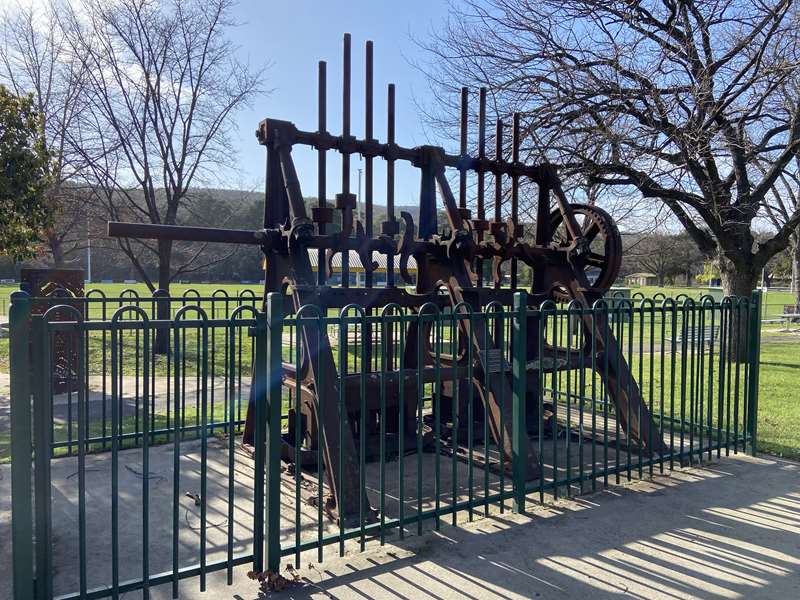
Used to crush ore in the extraction of gold.
21. The National Bank - 1926
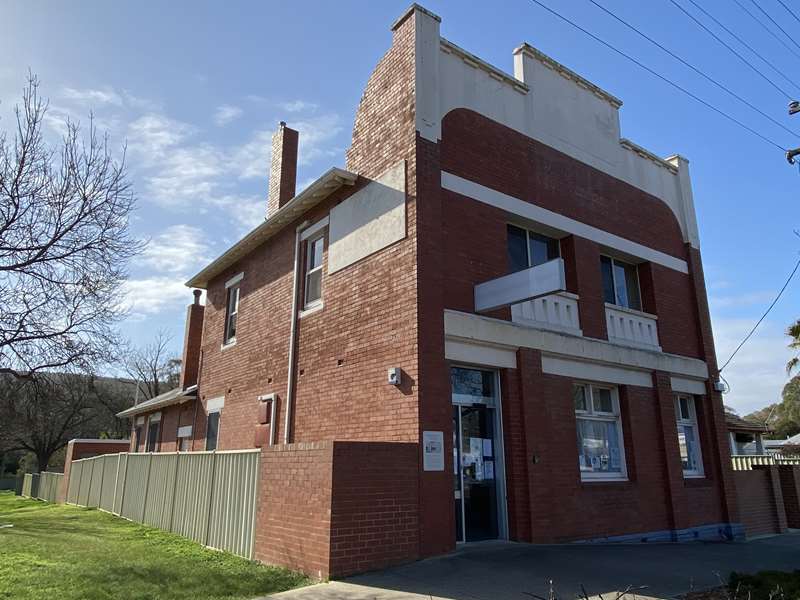
Site of the Mount Ida Hotel, 1854-1925 - first licensed hotel completed in Heathcote. Frequented by horse and racing fraternity. Passenger and mail coaches left from the Hotel.
22. Masonic Hall - 1859
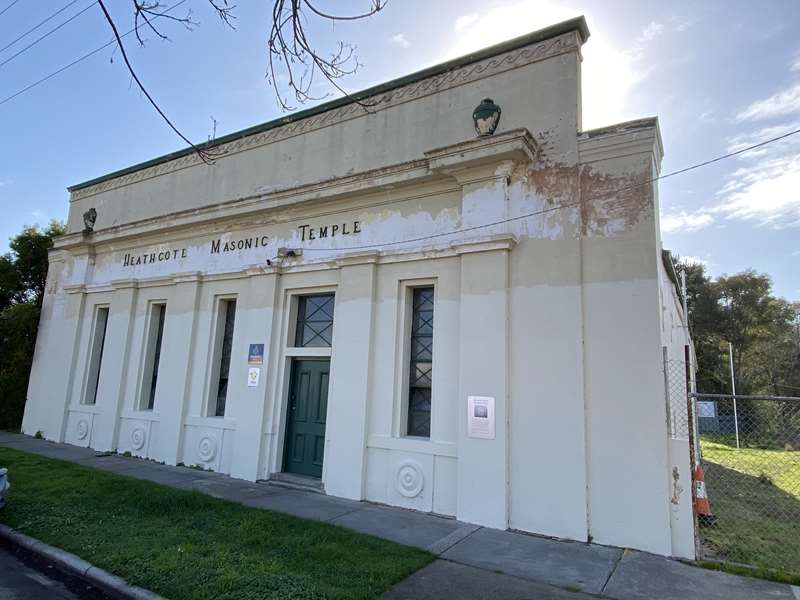
Building commenced and was completed in 1890.
23. Old Oriental Bank - 1860, Cnr High & Jennings St.
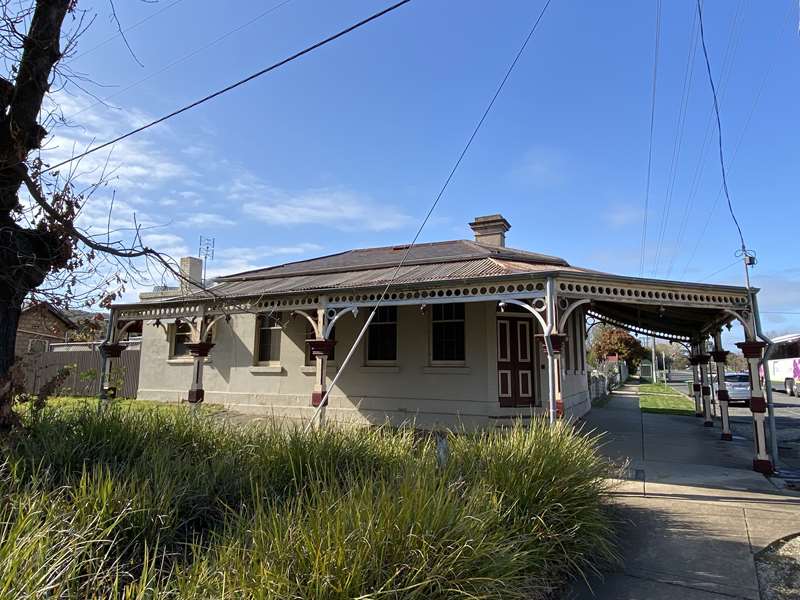
Built by Bank of Australasia, taken over by Oriental Bank 6 months later, sold to Bank of Victoria 1865. Note remnant stone guttering, left at owners request when kerb and guttering was modernised.
Cross the road now!
24. The Heathcote Hotel: Original building 1854, rebuilt 1953.
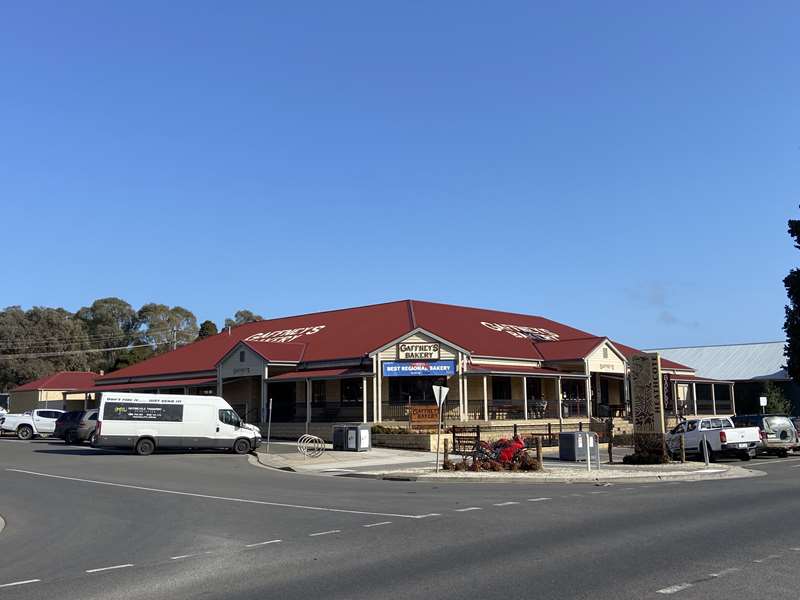
Always the hub of Heathcote meetings, town planning, social functions, concerts and coach changing station.
25. Grants store - 1850s
This general store has had some interesting names over the years, Heathcote hall, New Era Store, Albion House, Beehive Stores and then Grants Store; later it became Goodfellows and IGA Friendly. At the rear was a smokehouse used for producing bacon. This building is currently vacant.
26. A Gaggle Of Geese - 1860s
Named McIvor Store, then Federal Bakery. In 1923 the McIvor Times was bought by Jack Bailly and printed here. The family owned the paper for 57 years. Since 1988, the restaurant has been a good place to soak up country atmosphere and cooking.
27. The Newsagency - 1860s
Originally housed two shops and converted to one in the 1960s. This property (as with most others in Heathcote) contained a water well in its back yard. Some are still in existence today.
28. Camp Hill Area
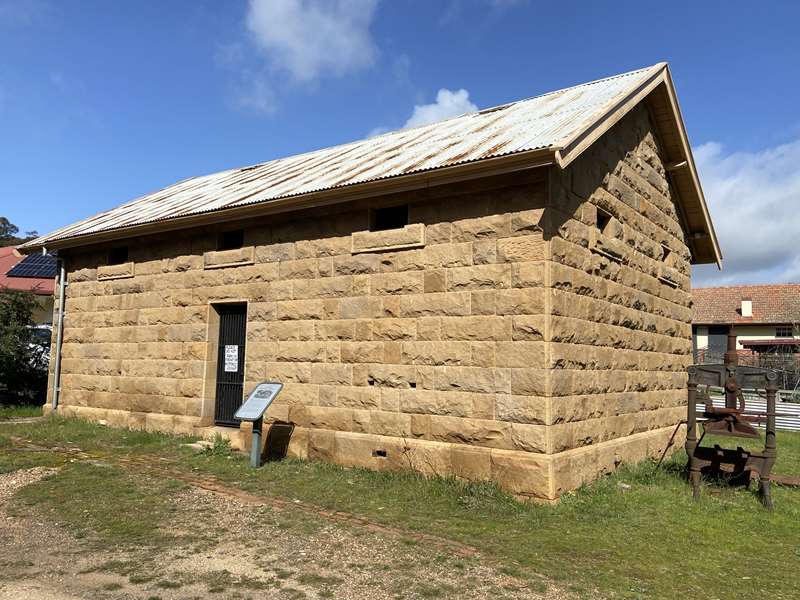
In the Goldrush of 1853, the government set up a tent based camp here. Extensive building started: government offices, police barracks, gold office, courthouse, communications, lockup, stables, store rooms and living quarters. The hospital, however, remained in a tent until 1859. Government officials and police lived in comfort above the dire conditions of the miners in the crowded goldfields. (Population had exploded to 20,000). The buildings were poorly constructed and began to deteriorate. The buildings remaining today are the Hospital and the stone jail block. The police stables, a fine sandstone building was demolished in 1970's despite protests.
29. Heathcote Hospital - 1859: Originally established in a tent in 1853, the building was completed in 1859.
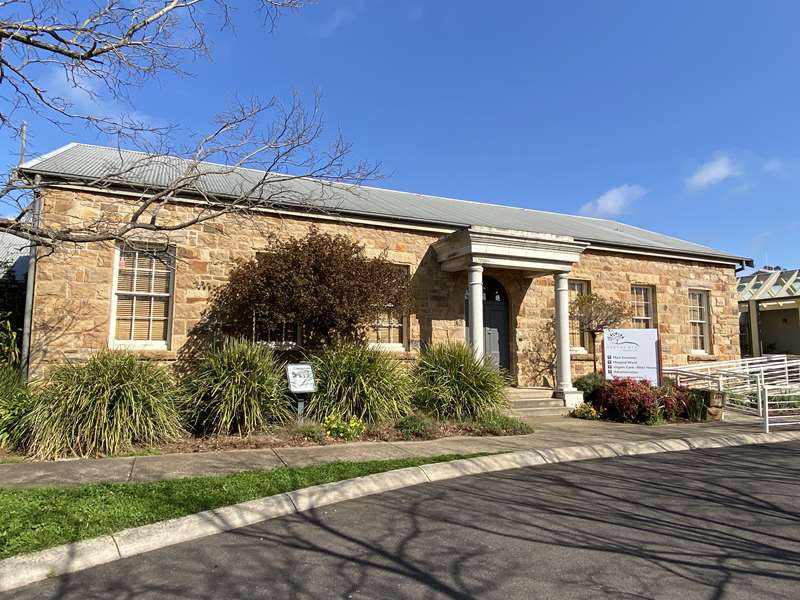
Today all that remains of the original building are the front stone walls. In 1996 after threats of closure over the years and with strong community commitment and support, the hospital now has consolidated its services to include hostel and nursing home, in total 42 beds.
Review:
An easy 2.8km walk which basically follows the High Street with a small side extension to the hospital and Camp Hill Area. There are some nice buildings to see and a gold stamper for those interested in gold mining history. We found it difficult to understand which buildings were being referenced for points 25, 26 and 27.
Information produced by the Heathcote & McIvor Historical Society
Photos:
Location
High Street, Heathcote 3523 View Map
Web Links
→ Heathcote Historic Town Walk Map (PDF)








